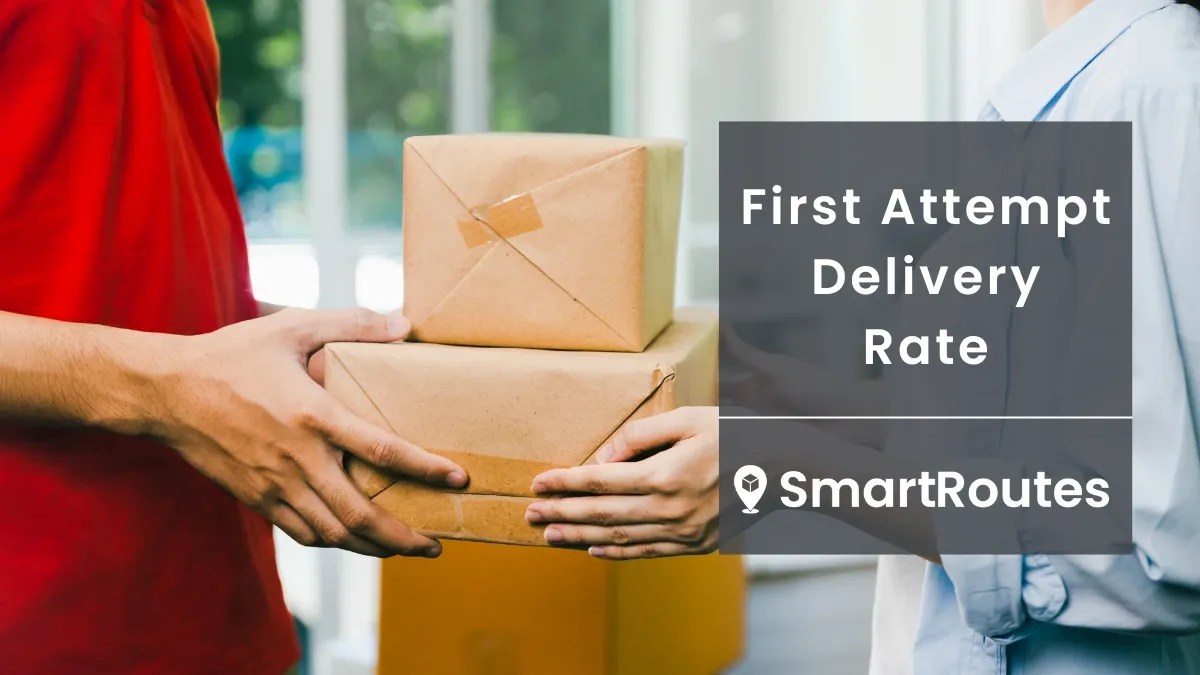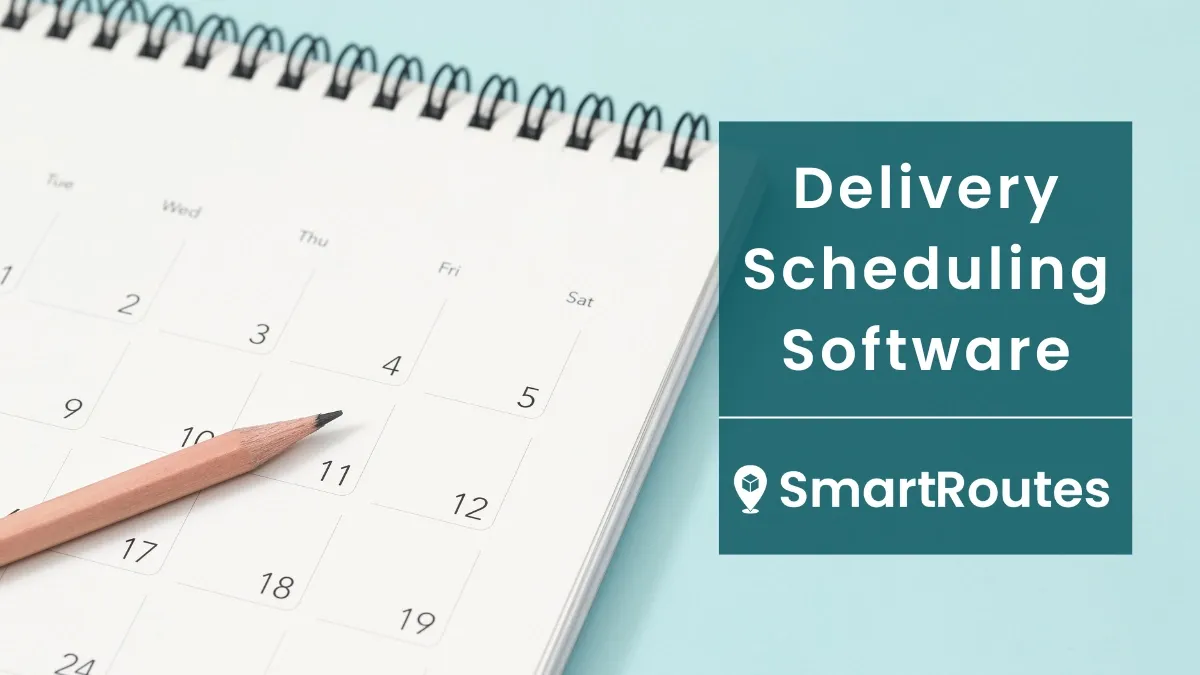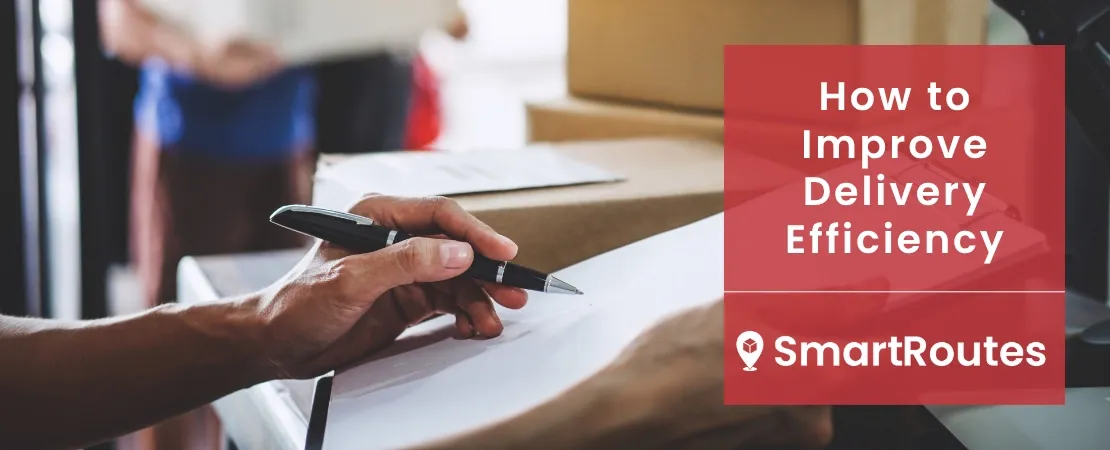In this era of instant gratification, delivery expectations are higher than ever. Customers expect not just speed, but accuracy, transparency, and reliability in every order. Whether you run a small business or manage a large logistics operation, meeting these expectations is no longer optional—it’s essential. A late or incorrect delivery can lead to frustrated customers, negative reviews, and lost business opportunities.
In fact, a single bad delivery experience can discourage a customer from ever ordering again!
The good news is that improving delivery efficiency doesn’t have to be complicated. By implementing a few key strategies and leveraging the right tools, you can streamline your operations, reduce costs, and exceed customer expectations.
In this blog, we’ll walk you through practical tips to help you enhance your delivery processes and impress your customers.
How to Improve Delivery Efficiency in 10 Steps
1. Track Key Performance Metrics
To improve delivery efficiency, the first step is to measure your current performance. Tracking key delivery KPIs provides a baseline, helping you understand which areas need attention and monitor whether your changes have a positive or negative impact. Without this data, it’s easy to misidentify underperforming areas.
The key metrics you should track include:
- Number of Completed Deliveries: Monitor daily, weekly, and monthly delivery volumes.
- Order Accuracy: Ensure packages reach the right destination without errors.
- First Attempt Delivery Rate: Measure successful deliveries made on the first attempt.
- On-Time Delivery Rate: Track how often deliveries meet their promised timeframe.
- Average Time Per Delivery: Identify inefficiencies in time spent per order.
- Average Cost Per Delivery: Optimize routes and operations to reduce costs.
- Out-of-Route Miles: Minimize unnecessary detours and mileage.
- Vehicle Capacity Utilization: Maximize the space in delivery vehicles.
- Net Promoter Score (NPS): Gauge customer satisfaction with your delivery service.
By monitoring these metrics, you can make data-driven decisions that directly impact efficiency and profitability. For a more detailed breakdown of these key performance metrics and how to track them effectively, check out our guide on measuring delivery performance.
2. Optimize Vehicle Loading + Vehicle Type
By planning and sequencing deliveries before loading, you can significantly reduce the time drivers spend searching for packages. Organizing items in the exact order they’ll be delivered ensures that drivers can make quick, efficient stops without having to rearrange or search for items mid-route.
Additionally, consider the specific needs of your delivery area and the types of vehicles in your fleet. Smaller vans and trucks are typically better suited for navigating congested city streets, where tight spaces and traffic are a constant challenge. On the other hand, larger vehicles are ideal for bulk deliveries in suburban or rural areas, where roads are less congested, and deliveries often involve fewer, larger items.
SmartRoutes Route Planning Software
Streamline your entire delivery process, all from one platform

3. Automate Route Planning
Manual route planning is prone to errors and inefficiencies. Automating this process ensures your drivers follow the most efficient routes, accounting for multiple factors that can impact delivery performance. Advanced delivery software can factor in:
- Driver Schedules and Breaks: Software ensures drivers stay within legal work limits and take required breaks.
- Delivery Time Windows: Automates route planning to ensure deliveries meet customer-specified time frames.
- Dynamic Delivery Prioritization: Software automatically adjusts routes to prioritize urgent or time-sensitive deliveries, ensuring key packages are delivered on time.
- Vehicle and Driver Restrictions: Accounts for factors like weight/capacity limits and driver skills (e.g., handling specific vehicle types), ensuring safe and efficient routes.

Automated route planning software uses algorithms to integrate real-time data, such as driver availability and vehicle constraints. Some platforms even allow you to schedule routes weeks in advance, ensuring flexibility and better preparation for peak times or unexpected disruptions. This automation reduces human error, improves delivery times, and enhances customer satisfaction by delivering on time, every time.
4. Offer Delivery Time Windows (but only if you plan to stick to them!)
Customers value predictability and transparency when it comes to delivery. Offering specific delivery time windows is a powerful way to build trust and improve customer satisfaction—but only if you consistently meet those expectations.
By providing clear, defined time slots, you make it easier for customers to plan their day around the delivery, reducing frustration. [If your delivery radius is large, consider displaying estimated delivery times by region on your website, helping to set realistic expectations for customers based on their location.]
Automated notifications—such as "out for delivery" alerts or updates on delays—keep customers informed in real-time, offering peace of mind and fostering a positive experience.
5. Track Drivers in Realtime
By monitoring your drivers’ locations throughout the day, you gain valuable visibility into the entire delivery process. This level of oversight allows you to make proactive decisions and keep everything running smoothly.
One of the key benefits is the ability to send live tracking links to customers. Sending a link that shows the exact location of their delivery in real time not only improves customer satisfaction but also increases transparency, as customers can track their packages and know exactly when to expect them.
For your operations team, real-time tracking offers enhanced oversight. Dispatchers can easily monitor drivers on the road, making it easier to identify potential delays or issues before they become problems.
6. Demand Forecasting
Accurately predicting delivery demand is a crucial step in optimizing your delivery efficiency. By understanding when and where demand will peak, you can allocate resources more efficiently, ensuring your team is prepared for busy times without overcommitting during quieter periods and thus adhering to delivery schedules.
Effective demand forecasting begins with analyzing historical data. Reviewing past delivery volumes and trends provides a solid foundation for understanding your typical delivery cycles. This historical insight can help you identify patterns, such as seasonal spikes (e.g., holidays, end-of-quarter surges) or recurring busy days of the week (like weekends or paydays), allowing you to plan ahead.
By recognizing these fluctuations in demand, you can adjust your capacity and staffing levels to meet the higher demand without sacrificing service quality.
7. Optimize Warehousing Management
Streamlining warehouse processes ensures that products are picked, packed, and dispatched quickly and accurately, which ultimately speeds up the entire delivery cycle. A key tool in optimizing these operations is a Warehouse Management System (WMS).

A WMS is a software solution designed to manage and control warehouse operations in real-time. It helps businesses to automate:
- Inventory Tracking: This reduces the chances of stockouts or overstocking, and ensures that workers can easily locate the products they need.
- Optimized Picking: A WMS can use pick-to-order or zone picking strategies, for example, a WMS can automatically direct warehouse staff to pick items from the most efficient locations based on order volume, reducing walking time and minimizing delays.
- Shipping Integration: A WMS can integrate with shipping carriers to automatically generate shipping labels, track deliveries, and send notifications.
By reducing human error, improving inventory management, and speeding up order fulfillment, a WMS allows drivers to spend less time waiting for packages. This enhances the overall speed of delivery, helping you meet your delivery promises and improve customer satisfaction.
8. Improve Vehicle Maintenance
By keeping your vehicles in optimal condition, you can minimize the risk of delays caused by mechanical failures, and reduce unexpected costs from major repairs.
To stay ahead of potential issues, it’s important to implement a maintenance schedule that outlines routine inspections, oil changes, tire rotations, and other essential services. A proactive maintenance schedule ensures that vehicles are always ready to hit the road, reducing the likelihood of unexpected breakdowns.
In addition to regular maintenance, pre-route driver checklists are a valuable tool for identifying issues before they become problems. These checklists often include steps like visual inspections for signs of wear and tear, tire pressure checks, and ensuring that vehicles are stocked with necessary tools or emergency equipment. Encouraging drivers to complete these checklists ensures that any potential issues are flagged early, allowing for timely repairs or adjustments. [Some delivery platforms also integrate mandatory driver questionnaires before starting a route.]
9. Invest in Delivery Software
Investing in delivery software is one of the most effective ways to enhance delivery efficiency. These platforms automate critical aspects of the delivery process, helping you streamline operations, save time, and reduce costs.
Delivery software simplifies complex tasks like route planning, driver tracking, and performance monitoring, all from one central platform. With these tools, you can ensure that routes are optimized based on real-time conditions, drivers are efficiently managed, and performance is continuously monitored. This leads to improved operational oversight, reduced delays, and better resource utilization.
10. Monitor and Request Feedback
Customer feedback is crucial for understanding their delivery experience from start to finish. Whether it’s through post-delivery surveys, direct communication, or social media interactions, listening to what your customers have to say allows you to pinpoint areas where your service might fall short. Addressing these concerns can lead to better customer retention and fewer complaints, ultimately improving your bottom line.
Driver feedback is equally valuable. Your drivers are the ones on the front lines, experiencing the day-to-day challenges of delivery firsthand. They may have insights into potential route improvements, vehicle issues, or ways to streamline the loading/unloading process. Encouraging them to share their feedback helps uncover innovative ideas for improvement that you might not have considered.
How SmartRoutes Helps Improve Delivery Efficiency
SmartRoutes streamlines delivery management by leveraging automation and advanced features designed to optimize your entire delivery process. From route planning to real-time driver tracking, our platform ensures every aspect of your operation is running at peak efficiency. With SmartRoutes, you can:
- Reduce delivery costs by up to 33%, thanks to optimized routes and reduced fuel consumption.
- Save valuable time by automating routine tasks like route planning, tracking, and reporting, allowing your team to focus on higher-priority tasks.
- Enhance customer satisfaction with real-time tracking updates, providing your customers with visibility and predictability throughout their delivery journey.
Whether you're a small business or a large logistics operation, SmartRoutes is designed to improve delivery efficiency, cut costs, and create a smoother, more reliable delivery experience. Start your free trial today and see how SmartRoutes can transform the way you manage deliveries.
FAQ
1. What is delivery efficiency?
Delivery efficiency is about getting products to customers as quickly, accurately, and cost-effectively as possible. It involves optimizing routes, minimizing costs, reducing delays, and ensuring high order accuracy. Achieving delivery efficiency means meeting customer expectations while using fewer resources, which ultimately improves profitability and customer satisfaction.
2. How do you calculate delivery efficiency?
To calculate delivery efficiency, businesses track key performance indicators (KPIs) that measure how well deliveries are executed. Important metrics include on-time delivery rates, which show how often deliveries arrive as scheduled, and order accuracy, which tracks the number of correct deliveries. Additionally, cost per delivery helps gauge operational expenses, while first attempt delivery rate shows how often deliveries are completed on the first try.
3. How to improve delivery efficiency?
Improving delivery efficiency can be achieved through a combination of strategies. Start by tracking performance metrics to identify weak spots. Automate route planning to minimize travel time and optimize delivery paths. Ensuring proper vehicle loading saves time and improves capacity. Investing in delivery software can automate processes such as driver tracking and reporting, allowing you to streamline operations. Additionally, forecasting demand ensures resources are allocated correctly, while regular vehicle maintenance helps avoid delays caused by breakdowns.
4. Can I improve my delivery efficiency without compromising quality?
It’s possible to improve delivery efficiency without sacrificing quality by focusing on optimizing processes while maintaining high standards. Automated route planning ensures quicker, more accurate deliveries, while offering specific delivery windows helps set and meet customer expectations. Monitoring driver performance ensures efficiency without cutting corners. By leveraging the right tools and processes, businesses can deliver faster and more efficiently without compromising quality.
If you enjoyed this blog, you might also be interested in:





